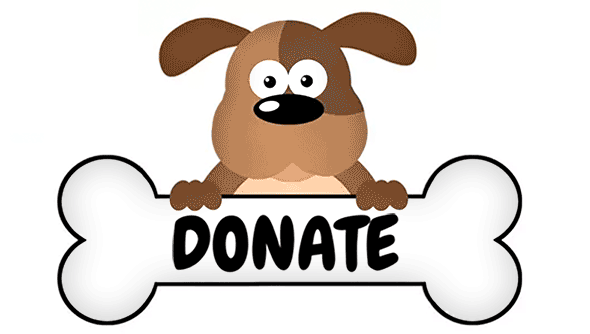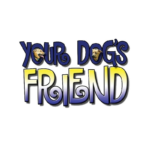
“Leave me and my ball alone.”
Resource Guarding
Resource guarding refers to a dog displaying behavior (growling, snapping, etc.) intended to convince other dogs or humans to stay away from a particular treasure or “resource.” The resource can be food, treats, toys, a place (a bed or favorite chair), or occasionally a person. A resource is anything that is considered by the dog to be of high value.
When Is Resource Guarding a Problem?
Resource guarding is normal dog behavior. Dogs have evolved as opportunistic feeders, and it’s natural for them to protect what they consider to be “theirs” from potential takers. The displays of growling and related body language are the dog’s way of saying, “Back off! This is mine, and I don’t intend to give it up.” In most instances of resource guarding involving two dogs, the dogs are simply communicating, and one dog will back down. The situation is resolved quickly without conflict. However, if one of the dogs is exhibiting signs of stress or they are fighting over resources, remove anything of potential value when the dogs are together. Only allow items such as food, bones, or toys when the dogs are safely separated by a barrier, such as a closed door or baby gate.
That said, resource guarding can be a serious problem if a dog threatens to bite his human family when they try to take something away. Dogs must be willing to give up things they would rather keep, like that plastic bag or turkey bone. Resource guarding is a major cause of aggression toward humans, particularly toward children. Children, especially small children, carry around toys and food where the dog can reach them. Children are less likely to understand the importance of respecting the dog’s possessions and are likely to grab for them. Finally, their height means that bites to children often occur on the face or upper body, resulting in more serious injuries. For this reason, it is important that a child is never left alone with a dog. If resources are present, the child and dog should be separated by a barrier, even if an adult is present. Situations can escalate and you never want to have to say “I wish I had…”
What Does Resource Guarding Look Like?
Resource guarding can develop at any age and can involve almost anything that can be considered valuable to the dog. Some dogs only guard what they have (a toy or bone, for example) or when they’re eating. Other dogs guard toys or treats in their general vicinity, even when they don’t seem all that interested in them. A few dogs guard space, like the couch or bed. What looks like a dog guarding space, though, could actually be a toy or bone that is hidden in that space or under the couch. Dogs may guard resources from other dogs, humans, or both. Resource guarding can also vary in severity, from a dog that will simply move to another location with a toy to a dog that snarls, growls, snaps, or bites if approached. The guarding behavior can sometimes escalate through these levels as a dog perceives an increasing threat. Lower level behaviors (e.g., lip lifts, snarling, or growling) are simply warnings. Don’t punish your dog for these warnings, or he may stop giving warnings altogether and move directly to a more aggressive behavior, like biting.
What Can I Do?
Whether you have a puppy, a new dog that doesn’t yet resource guard, or an occasional, but not dangerous, resource guarder, you want your dog to learn that there is no need to guard his “treasures” and that there are benefits to giving them up. Practice these exercises frequently before you really need them.
- When your dog is eating or chewing on a bone or toy, walk by your dog without speaking or making eye contact and casually drop a very special treat, like a piece of chicken or beef, by his feet or into his bowl. This will teach him that humans approaching his food are not a threat, but rather something good. This is especially helpful when you first bring a dog into your home.
- Choose a word or phrase like “drop it” or “give” to use as a release cue when you want your dog to give up something that he has. Get something that will interest your dog, without being high value. You will also need some really yummy treats (diced cheese, hot dogs, whatever your dog loves). Using food also has the advantage of allowing you to practice this exercise a number of times in quick succession. Make sure that everyone in your household uses the same cue.
- Teach your dog a great drop cue – we like Chirag Patel’s method, which you can watch on his YouTube channel. With your dog in a room or the yard, begin walking around. Anytime you approach your dog, say “drop” (or whatever word you have chosen), drop the treat and move away. Continue this step until your dog is eagerly anticipating the cue word. Next, give your dog a low value toy. Keep moving around the room, cueing and dropping the treat anytime you approach your dog, then walk away. Once your dog is readily dropping the toy when you approach, begin picking up the toy after your dog drops it. Give it back to him after he has finished the treat. Repeat with higher and higher value items. Remember to casually pick up the toy. Do not attempt to race your dog to the toy or grab it from him. If he reaches immediately for the toy, toss some treats away from your dog to move him away. Reduce the value of the toy and continue to practice a little longer before upping the value of the toy again.
- If there is a specific item that your dog guards (a chew toy or favorite tennis ball), that item is “off limits” until your dog learns to willingly share his treasures. Put the item out of sight. When your dog learns to “drop” items of lesser value, then…and only then…will he be allowed to first practice with his “special” item, and then have access to it on a regular basis. The same principle applies to places. If your dog guards the couch, use a baby gate or tether, so that your dog doesn’t have access to the couch. If it’s your bed, your dog should not be allowed in the bedroom.
- Some dogs will resource guard particular people in the house and may only guard them in certain locations. For example, it is common for toy breeds to guard their person’s lap. This is instinctual behavior for these dogs as they were selectively bred to spend most of their time on the lap of an aristocrat and alert his person to the presence of others through barking. If your dog is guarding a person, you can change their emotions regarding another person’s approach by having that person walk past and gently toss a yummy treat to the dog. When this is repeated over and over from different angles, etc., the dog learns to positively associate the approach of people with good things. Another technique would be to teach your dog stationing – to go to a mat for a reward anytime someone approaches his person. Teaching a dog to stop guarding space often requires a more nuanced technique and a positive reinforcement dog trainer or veterinary behaviorist from our referral list should be contacted for help.
What If My Dog is Already a Serious Resource Guarder?!!!
If your dog aggressively guards resources, especially if he has made you feel unsafe or if you have children in the home, you should consult a positive trainer or veterinary behaviorist from our referral list immediately. While resource guarding is not uncommon, it can become a serious issue that is potentially dangerous for both dogs and people. Many bites, especially to small children, occur as a result of resource guarding. Keep your dog and your family safe by seeking professional help to deal with this issue.
Key Points to Remember
● Resource guarding is a natural behavior for dogs, but it must be managed so that it doesn’t become an aggressive behavior.
● Prevent inappropriate behaviors from developing by rewarding desirable ones. Take the opportunity to create positive associations between people and resources.
● Good management will keep your dog from getting things he shouldn’t. Close doors, put the trash in the closet, and keep the laundry basket out of reach.
● Resist chasing your dog when he has a treasure. The chase is a reward and teaches your dog that theft brings attention and play. Get in the habit of trading for something better.
● When teaching your dog to “drop it” or “give”, start with boring items and gradually work up to more valuable ones.
● Make sure that what you “trade” is more valuable that what you are asking your dog to give up. Your dog gets to define “valuable.”
● Never hit, scare, or threaten your dog in order to get something from him, even if he snarls or growls. He is telling you to “back off,” and that’s a warning message you want him to be able to express. Dogs that are punished for growling may stop growling and go straight to biting.
● If you have a multi-dog household and one or more dogs are resource guarders, feed them or give them bones or toys in different spaces separated by a safety barrier such as a baby gate, fence, crate, or closed door.
● Never leave a child and dog alone for any reason. Even if an adult is present, the child and dog should be separated by a safety barrier anytime resources are present.
Resources
Mine! A Guide to Resource Guarding in Dogs by Jean Donaldson
Your Dog’s Friend webinar, “Resource Guarding – how to help the dog who doesn’t share”
Teaching your Dog to Drop , a video by Chirag Patel
Resource Guarding in Dogs, a video by Michael Shikashio, a world-renowned expert in aggressive behaviors in dogs.
Resource Guarding Treatment and Prevention by Dr. Patricia McConnell in her blog, “The Other End of the Leash”
Unwanted Dog Food Guarding Behavior from the “Whole Dog Journal”
Resource Guarding/ Food Aggression, a video that shows a professional trainer demonstrating the general methodology, and some of the more subtle signs of resource guarding
Still Need Help?
Contact Your Dog’s Friend at [email protected] or (301)983-5913 for advice and referrals or check out our list of recommended trainers and behaviorists.
Your Dog’s Friend is a nonprofit 501(c)(3) organization working to improve dogs’ lives, reduce problem behaviors, and keep dogs out of shelters, by educating and supporting their humans.
This material is not intended to be a substitute for professional help when dealing with dogs with intense or potentially dangerous behavior issues. Consult a positive reinforcement trainer or veterinary behaviorist for professional assessment, guidance, and support.




